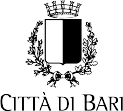The project
The project
numbers
Cities
Urban archaeology sites
Students
Working days
Background
The project is part of an educational collaboration, launched in 2017 between the schools of the two cities, the Upper Secondary School Marco Polo in Bari and the Friedrich-List-Berufskolleg in Hamm within the PASCH- school network, an initiative promoted by the German Ministry of Foreign Affairs and supported by the Goethe-Institut. The collaboration was finalized through a twinning signed between Bari and Hamm on 21/5/2021.
The staff from Bari and Hamm at the Town Hall in Bari
The future Park of Rebirth in the area of the former Fibronit factory
The glass elephant, landmark of the city of Hamm
Regeneration works at the former Fibronit factory
Hammerhead tower at CreativRevier Heinrich Robert
Aerial view of the former Tobacco Factory in Bari
Place for interreligious encounters in Lippe Park
Street art painting of the Spanish artist Elías Taño on the outer wall of the Rossani Barracks
Previous
Next








